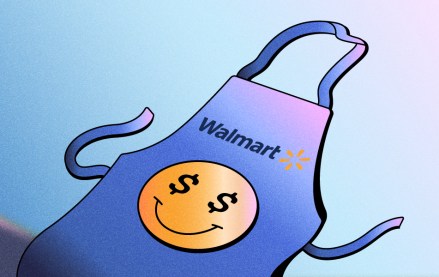Register by Jan 13 to save on passes and connect with marketers from Uber, Bose and more

This article is written by Ales Gabrovec, vp of product and Mark Zegarelli, technical writer at Celtra.
Until recently, digital display advertising fell into one of the many silos mainly dictated by technology; mobile, desktop, video, social, etc. With rich mobile display ads built on HTML5 technologies, and desktop ads existing primarily in Flash, there was no easy way to bring them under the same roof. This has led to many disparate brand experiences across devices, with very limited ability to compare performance.
However, we’re beginning to see things change for the better. Due to the broadening support for HTML5 in desktop browsers–as well as connected TVs, gaming consoles and car screens–digital brand display advertising is beginning to coalesce under the HTML5 umbrella.
This is exciting news for advertisers, as they are increasingly trying to create consistent and engaging experiences across devices.
In Mobile Marketer, Jennifer Okula, senior vice president at Millward Brown Digital, New York said, “many marketers are already experimenting with cross-screen marketing, but the challenges are whether marketers are creating unified campaigns that are effective for each individual platform.”
This does not need to be the case any longer. With a common backbone of HTML5, agencies and brands can build ads that take advantage of several key benefits that will help them avoid this trap:
Complete platform solutions allow for centralized campaign management and streamlined creation of ads
HTML5 platforms allow for ads to be built for each screen using a single point of creation and a single technology and can easily share assets for the most consistent experience possible even through different ad formats. Responsive ad design technology further eases the creation effort.
Flexible use of ad formats and device-specific technology
Cross-screen advertising lends itself to several very interesting scenarios when dealing with creative across different device screens. Opportunities range from ad size, format, and utilization of device-specific features. You can either use a single identical creative execution across all screens (easy) or mix and match formats (more interesting) and, technology permitting, even storyboard your executions to hone in on specific milestones in the purchase decision process (ultimate).
Simplified ad serving and tag management
As you use a single point for campaign management, generating a single tag for distribution is now a simple task. The ad tag is smart enough to detect the device and shows the appropriate creative for that specific device screen. This eliminates all the heavy lifting of the tag distribution process and is a natural fit for the programmatic space.
Common metrics and consolidated analytics
Certainly analytics have been the biggest challenge as different technologies approached measurement differently, yielding different metrics and measurement methods. By using the same ad technology across screens, this is no longer the case. Consolidating views is no longer a challenge because performance across all screens and placements can be accurately compared.
These benefits come together to unlock the promise of consistent and rich ad experiences across different device screens at scale and with convenience that many in the industry yearn for. The future of digital display advertising will undoubtedly be cross-screen and the creative will be able to seamlessly travel and adjust to the context in which it appears, whether it’s a phone, tablet, desktop, connected TV, a gaming console or an automobile.
More from Digiday

Inside the brand and agency scramble for first-party data in the AI era
Brands are moving faster to own first-party data as AI and privacy changes alter the digital advertising landscape.

Future starts to sharpen its AI search visibility playbook
Future is boosting AI search citations and mentions with a tool called Future Optic, and offering the product to branded content clients.

Walmart Connect takes a play out of the Amazon playbook to make agentic AI the next battleground in retail media
The next retail media war is between Walmart Connect’s Sparky and Amazon’s Rufus, driven by agentic AI and first-party data.






